When the first steam locomotives thundered down the rails of Ecuador in the late 19th century, the natives were understandably terrified. Most fled, while others left gifts of corn on the tracks to appease the beast. Engines such as old Number 45 became known collectively as “the black monster,” haunting the dreams of small children.
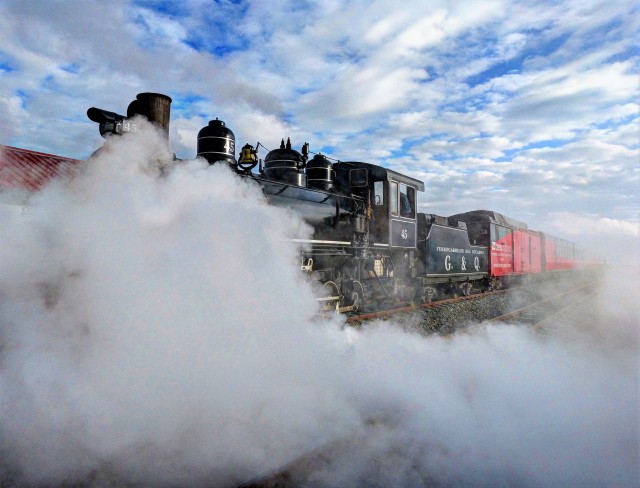
The railroad project was launched by President Gabriel García Moreno in 1861, in the western coastal plains where the terrain was flat. But the Ecuadorian Andes are hard to ignore, and to link the capital of Quito to the coast, a difference in elevation of 9350 feet, mountains would be scaled. Serious mountains. It’s often been called “the most difficult engineering feat in the world.”
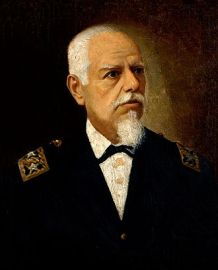
By 1895, a new president, Eloy Alfaro, was determined to accept the challenge. He brought in thousands of foreign workers, many of whom would lose their lives on the project, and his designers and engineers tackled the mountains and ravines, the roaring rivers, the earthquakes and volcanos, and especially the vertical heights to be scaled.
In one stretch of just over seven miles, they devised a scheme to ascend more than 2600 feet, through a series of acrobatic zig-zag switchbacks up the face of a massive rock known as the Devil’s Nose. In one section it climbs 500 feet in well under a mile. Many don’t remember that today’s tourist destination had a more pragmatic past.
The railroad system has had a rugged arc of history as craggy as the mountains it traversed. It has seen triumph, expansion, decline, and decay—and since about 2008, a rebirth. Former president Rafael Correa invested millions in modernization and repair, though at times in fits and starts; while new track was put down, a bridge might wash out somewhere else.
So when some old friends invited me to join them for a four-day tour on the Ecuadorian luxury train known as the Tren Crucero, I jumped at the chance to see new corners of a country I never tire of exploring.
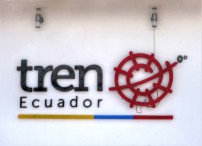
The various sections of rail are not all connected, so the excursion features a creative coupling of rail and comfortable motor coaches, hotels and meals, and a spectrum of destinations including historic working haciendas, museums, artisans and markets.
It might be described as four days of sensory overload, interspersed with long, languid glides through some of the continent’s most stunning landscapes.
We began our tour with a day in Imbabura Province, visiting a workshop where artists applied whisper-thin gold leaf to hand carved wooden sculptures, mostly but not exclusively of a religious nature, and then moved on to a former cotton fabric plant, now a huge museum filled with row upon row of silent machines, and offering a kind of steampunk paean to the Industrial Age.
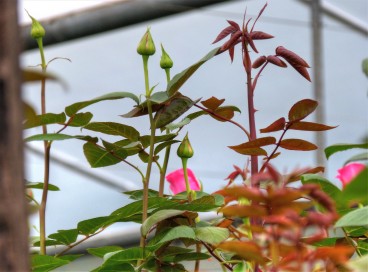
Then to a working hacienda, La Compañía de Jesús, where an elegant lunch awaited us in the house built in 1900—the newest structure on the place, the owner said. The hacienda, like most of the surrounding area, is in the rose business. Ecuador is the biggest exporter of roses in the world, and the equator is the perfect place to cultivate long-stemmed roses that reach straight up for the sky.
The house was filled with hundreds and hundreds of roses. A rose showroom held hundreds more.
Like many haciendas, the grounds include an old chapel. This one was built with an inclined stone floor by the Jesuits, who opined that if a person wanted to be closer to God, it shouldn’t be made too easy.

The next day we boarded the train at the station in south Quito, traveling 45 miles to Hacienda La Alegría, home to the Andean horsemen known as chagras. In a way it’s a temporary home, because they generally spend about 22 days up in the higher elevations, herding wild cattle, and then eight days with their families. There were snacks, and impressive demonstrations of horsemanship and roping of bull calves with long leather lassos.
By now, events and places had already started to become a blur, but an exceedingly enjoyable one. It’s what happens to people who are constantly fed delicious meals and snacks, are chauffeured wherever they go, and can follow simple instructions, such as, “Go over there and eat that.”
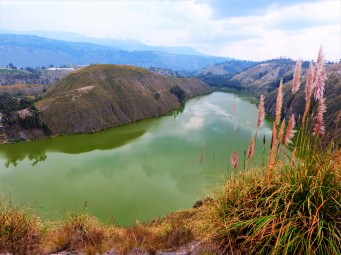
Along the way we passed the mysterious, emerald-green Yambo lagoon, rife with a history of ghost stories intertwined with train stories, and theories that the deep, largely unexplored underwater caverns might reach all the way to the Amazon.
We chugged up to nearly 12,000 feet, arriving about sundown at the settlement of Urbina, where the Ice Man waited.
Baltazar Ushca has spent most of his life harvesting ice from the glacier atop Chimborazo volcano, making the 4-hour trip each way and returning with 50-pound blocks wrapped in straw and strapped to the back of a burro. At 73, he’s the last man standing in a profession that ice factories long ago rendered obsolete. And although he’s cut back to just two days a week, he still treks up the mountain that is the closest place to the sun on earth. (Because the earth bulges significantly at the equator, and Chimborazo is near the equator, it’s 2.1 kilometers closer to the sun than Everest.)
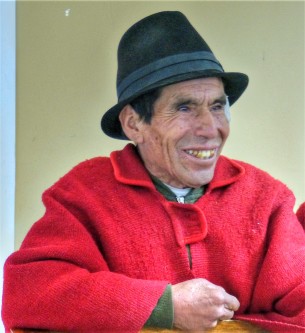
Baltazar is a humble man but enthusiastic about his trade, and something of a genuine folk hero. When I mentioned my upcoming visit to any Ecuadorian, every single one of them knew his name, and I was happy to tell him so.
He didn’t seem surprised.
We spent the chilly night in the warm confines of Hosteria Andaluza, with another hearty dinner and an early wake-up call. This trip is not for the slugabed. We have places to go.
We re-boarded the train, which had switched from a diesel to a steam locomotive, and began a daylong downward glissade of more than eleven thousand feet, through some of the most spectacular scenery of the journey. Laborers worked in fields tucked like quilts into the mountains, people stood to take pictures with their cell phones, and joyous children ran to wave as the train passed, sometimes bursting from their classrooms. What could we do? We all waved back.

And then it was time for the Devil’s Nose. Switching to another train, we rumbled down into a bottomless gorge for nearly half an hour, coming at last to a flat space where we stepped out. I saw the monstrous rock and knew we had to scale it, but didn’t immediately realize we had already come down the same way. Being on the inside, hugging the rock wall, I hadn’t fully appreciated the vertigo I would feel on the return trip.
But the ease of the climb over solid tracks, and roadbeds carved into the dense basaltic andesite, is a testament to the enormity of the achievement. More than 2000 workers died from disease or effects of hard labor by the time the Nariz del Diablo was completed.
We climbed back onto the bus toward our overnight stay in Bucay, but it was slow going. It’s the rainy season, and landslides are common in a largely vertical country like Ecuador, where gravity takes its toll. In fact, washouts had also taken out some of the railroad tracks, so the tour is in a constant state of flux where routes and vehicles are concerned. Our driver steered expertly around the fallen-away slabs of mud and rock.
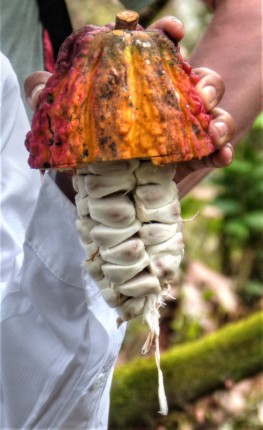
Cacao
We still had a full day to go. It was a short bus ride to Hacienda La Danesa, a peaceful hideaway of driveways lined with teak trees—standing straight on the equator, just like those roses—and expansive plantings of cacao trees. Chocolate! Ecuador’s chocolate is world-famous, and we enjoyed an uncommonly clear explanation of the complex process that transforms chocolate from simple cacao pod to sinful indulgence.
Then another glorious lunch, perhaps the best yet, from cream-filled plantain appetizers dusted with finely ground nuts to a wickedly sweet passion fruit dessert served in a miniature mason jar. Small wonder that the owners’ pet cow enjoys a pampered life, always milked by hand and given frequent beauty treatments to keep her skin soft and supple.
We withdrew to nearby Naranjito, where another steam train awaited our grand entrance into the city of Guayaquil, our final destination.
I don’t go on group tours. The only other one I can remember ended badly. But this one was a happy exception; a passage through the very soul of what makes Ecuador what it is. After more than five years getting to know the country, I felt like I doubled my knowledge in four days. And, because this is how things work, I’ve also doubled what I have left to learn.
It sounds like a great assignment.
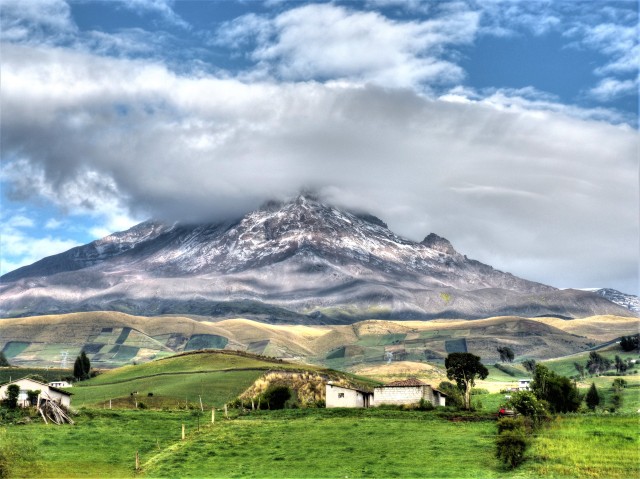
Chimborazo

What a travelogue; I am so envious. It did remind me of the Copper Canyon train trip in Mexico that I took a few years ago, but Ecuador sounds a lot more dramatic. Our trip was quite strenuous & at the end, my traveling companion–also in her mid-50s–said, “I’m certainly glad we did this trip now ’cause next year we’d be too old!”
Wonderful……………
Sounds terrific, Rick. Thanks.
Sounds like it was a beautiful trip. Thanks for the briefing. Tony
We so envy you. Recently we took an Amtrak ride from Jacksonville to Winter Park, Florida. just for a short but fun outing. The ride was to take about 90 minutes. We planned to spend a couple of hours in Winter park before boarding for the return trip. The train, though was over an hour late and for some reason could not make speed to Winter Park. We arrived with time to have a sandwich and board for the trip back, which was on time. Send the Ecuadorian RR experts here. We need them. .
Hi Rick, Thank you so much for your delightful blogs … I do so enjoy them What an interesting life you have in your adopted country. I barely knew where Ecuador was located before meeting you. Such an amazing rail route through such terrain. Not surprisingly many lives were lost, bupt this was before all the equipment now available that would have have helped. The terrain must have been awesome. You mentioned the delicious meals on the tour. What would one of them consist of? Tonight we advance our clocks for DST … I’d prefer it if it was year round. Spring is trying to make a Return to Iowa, but so far, Ive not seen the hint of Crocus or daffodil Greenery … but soon!!! Thanks again and here’s wishing you well. Jan
>
Nice read. Very cool place! Glad you’re still in love with Ecuador!